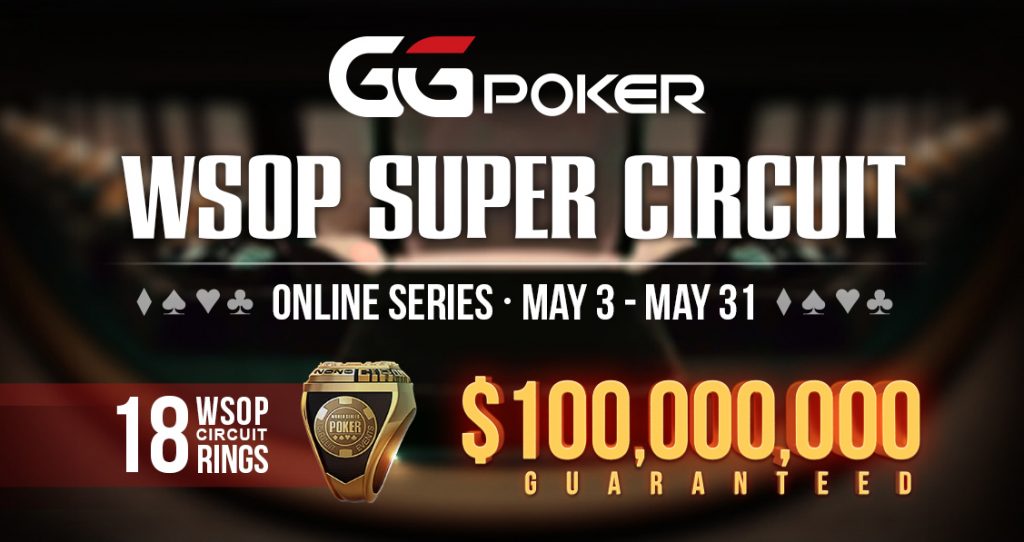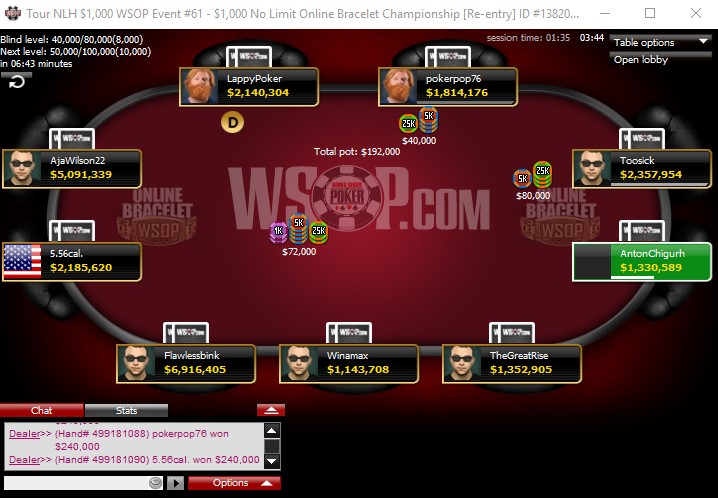
And to think, they said that online poker was dead!
An ecosystem riddled with decay.
It doesn’t look like that, today.
With the world unable to commune around the live poker table, poker lovers and professionals alike have been driven to online poker rooms in their droves – online poker rooms like GGPoker.
GGPoker’s life began in the East, but more recently, it has steadily moved its all-seeing eye towards life in the West. The race to become the ‘second-largest online poker room in the world’ has become congested and absorbing.
In a bid to get there nose ahead (PokerScout currently ranks them as the fourth busiest entity in the world). GGPoker has partnered with the World Series of Poker (WSOP) to create an 18-gold ring WSOP Super Circuit Online Series, and they’ve decided to use the new alliance to set a new online record.
While the 18 golden rings comprise the main course, these games sit amid a mammoth schedule that sees 595 tournaments running between May 3 and 31 with GGPoker guaranteeing $100m in prize money, beating the previous record by $15m.
That’s a statement.
The High Roller Scene
One area where GGPoker has applied intense focus has been at the high roller level.
When they first began marketing in the West, they hired Bryn Kenney as their sole brand ambassador, and you imagine he has helped them to move up the grooves in this area.
Since Kenney joined, there has been a steady increase of buy-ins between $1,000 and $5,000, and an unprecedented level of $25,000 buy-in events, making GGPoker a must-have client on the laptop of high stakes players.
You won’t find a WSOPC gold ring on the bucket list of too many high rollers, but that might change because on May 17 there will be a $10m GTD, $25,000 buy-in No-Limit Hold ’em tournament with a gold ring for the winner.
Outside of that monster guarantee, there is the $5m GTD $1,000 No-Limit Hold ’em Main Event, and a nice touch, with a $1,111 COVID Charity event with $111 donated to the Nevada COVID-19 Task Force. There is also a $1m GTD, $10,000 buy-in Pot-Limit Omaha (PLO) Championship, also taking place on May 17.
Here is the full schedule of gold ring events:
May 3
Event #1: $1,111, $1m GTD COVID Charity Event
Event #2: $50, $500k GTD Kick-Off
May 5
Event #3: $210, $500k GTD, Deepstack Bounty Hunters
May 10
Event #4: $200, $500k GTD Monster Stack
Event #5: $500, $2m GTD BIG $500
May 12
Event #6: $210, $500k GTD Deepstack Bounty Hunters
May 17
Event #7: $200, $500k GTD Monster Stack
Event #8: $25,500, $10m GTD High Roller Championship
Event #9: $100, $1m GTD. Mini Main Event
Event #10: $10,000, $1m GTD PLO High Roller Championship
May 19
Event #11: $210, $500k GTD Deepstack Bounty Hunters
May 24
Event #12: $200, $500k GTD Monster Stack
Event #13: $400, $2m GTD COLOSSUS
May 26
Event #14: $210, $500k GTD Deepstack Bounty Hunters
May 31
Event #15: $200, $500k GTD Monster Stack
Event #16: $1,000, $1m GTD PLO Main Event
Event #17: $1,000, $5m GTD Main Event
Event #18: $500, $500k GTD The Closer
The Future is Bright
Since the demise of Full Tilt Poker, PokerStars has had a lock on the high stakes action. It’s not a niche that has ever interested 888Poker, but it is one that’s attracted the attention of partypoker. The partnership with Poker Central saw $36m dished out during a highly competitive Poker Masters Online, and the Super High Roller Bowl Online takes place at the end of the month.
With GGPoker entering the space with a vast array of $25,000 buy-in events complemented by a decent flow of buy-ins between $1,000 and $5,000, high stakes poker players have never had as much food on their buffet.
Nah, online poker isn’t dead.
It’s very much alive.










